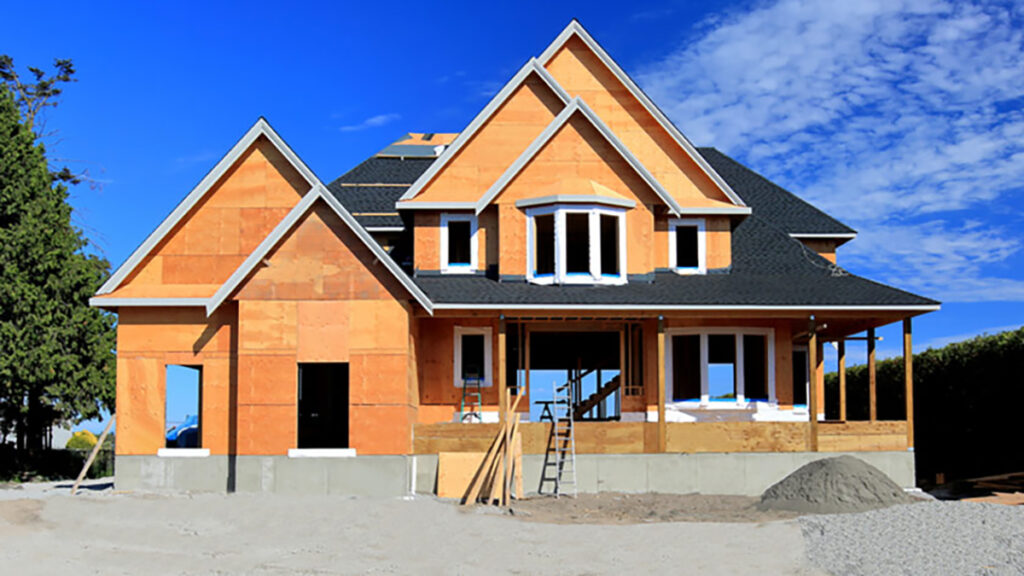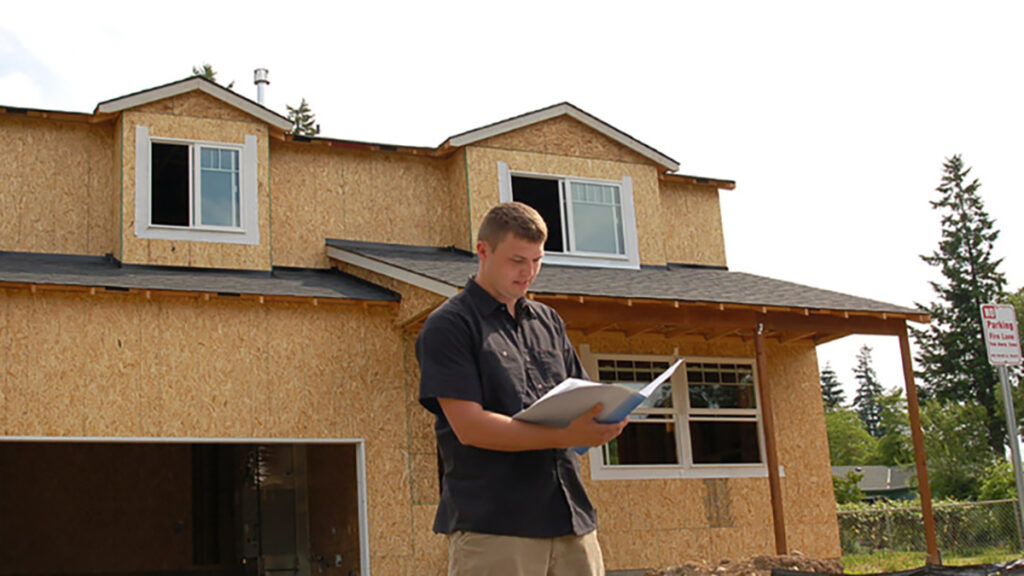

When building a new home or buying a pre-built one, having a home inspection checklist for new construction is necessary. A thorough new home inspection is one of the most important steps and can help ensure you don’t have any unwanted surprises.
Even though you are buying your perfect home from a builder’s agent or general contractor, it’s still wise to have a home inspection.

A home inspection is one of the most important steps for building a new home. This inspection is essential to ensure that the construction process has gone smoothly and that the finished product will be up to code and safe.
Regarding ensuring your new home’s construction goes as planned, here’s a home inspection checklist for new construction, including what to look for and potential red flags in the inspection process.
The foundation of your house provides support and stability. During this home inspection step, certified home inspectors should note any visible damage or cracks that may have occurred during construction.
Foundation and structure issues can be common new home construction defects. Modern construction practices use pre-fabricated trusses, which can cause increased shifting and settlement within the first year.
Most drywall cracks are harmless, but watching closely for separation and shifting is important. Additionally, they should monitor any settling or shift over time which can affect the property if it isn’t addressed quickly.
The electrical system provides power around the entire home and must always be inspected carefully. When examining the electrical in a new construction home inspection checklist, look for the following:
The plumbing system ensures water flows correctly from pipes throughout your new construction property’s walls, fixtures, and appliances.
During this step, inspectors must look for signs of leaks or rusting caused by poor installation or corrosion, which could be dangerous if not addressed promptly.
Furthermore, they must check each fixture and vent to ensure they are installed appropriately according to safety regulations, international codes, and standards.
A home inspection checklist for new construction plumbing should include the following:
HVAC stands for heating, ventilation, and air conditioning systems which keep indoor temperatures comfortable regardless of outdoor weather conditions. Inspectors will usually test each component individually when evaluating this system to ensure proper working conditions without any signs of damage due to faulty installation or lack of maintenance over time.
When testing the HVAC system as part of a home inspection checklist for new construction, it is important to look for proper operation of all components, including the furnace or air handler, air conditioning unit, thermostat, ductwork, and registers.
Look for signs of leaks and improper airflow in the ducts. Check that the temperature and humidity readings on the thermostat are accurate and consistent with other readings made during the inspection.
Ensure all mechanicals are installed properly; check for any unusual noises or odors from the furnace or air conditioner; and ensure all safety switches function correctly.
Most modern new homes require an energy efficiency test (blower door test) to check for insulation and be sure the building envelope is airtight.
A well-installed roof prevents weather elements from entering the interior space while protecting insulation materials from direct contact with outdoor temperatures, which can lead to energy losses over time if not properly taken care of daily.
When looking at a home inspection checklist for new construction for roofing, look for the following:
There are many aspects to consider in the interior of a home. When examining the interior of a home during a new construction inspection, look for the following:

Remember the builder’s warranties when considering a home inspection checklist for new construction. Many builders offer a home warranty that covers costly repairs such as structural defects, plumbing issues, and electrical problems.
Generally, a builder warranty covers any items that arise within 1 year of the home being built. Most warranties will cover any structural defects in the materials and workmanship that are part of the building contract.
Beyond this, some builder warranties may also cover roofing, siding, and windows for two years and the structure for ten years. It is also important to look into what is covered under warranty regarding labor costs and materials used.
Additionally, some warranties may have time limits or geographic restrictions. Review all aspects of the warranty before signing off on anything, as this could significantly impact what repairs will be necessary.
Builder warranties don’t cover natural disasters covered by homeowners insurance. Depending on where one resides, it is also important to consider any additional coverage necessary, such as earthquakes, floods, or hurricanes.
Regarding a home inspection checklist for new construction, one of the most important items to consider is warranties and owner manuals. The homeowner must know what mechanical warranties they can expect from their builder and who is responsible for upkeep and repairs if something goes wrong with any aspect of the home’s mechanical system.
Additionally, all owner’s manuals should be provided for homeowners to properly understand how to care for their systems and appliances. Owners will need to complete and file warranty cards for appliances and mechanicals. Many companies now offer this step online.
For mechanicals like water heaters and HVAC equipment, the warranty is typically 6 years or longer. The appliance warranty is often 1 to 3 years or longer, depending on the manufacturer.
A punch list is a short list of items that need completion before closing. Sometimes these items can prevent clearing a building permit from city inspectors.
A builder blue tape walkthrough with the buyer is important during new construction. Most reputable builders allow buyers to mark cosmetic issues with blue painter’s tape and create a punch list of repairs involving checking the quality of workmanship and any incomplete tasks that need to be addressed before closing.
The builder’s final new home walkthrough checklist verifies that all items in the original contract have been satisfactorily completed. This is done by reviewing each item on the contract, verifying its completion, and noting any deficiencies or areas needing improvement.
While you may be tempted to save money and do the inspection yourself, hiring a professional home inspector is always best. When your real estate agent makes your purchase agreement, your due diligence period allows you 10 to 14 days to hire a licensed home inspector.
A professional home inspector is a licensed and certified expert who knows what to look for and can objectively assess the home’s condition. They can identify potential issues you may not have noticed and provide a professional home inspection report outlining necessary repairs or maintenance.
There are several types of inspections that you may want to consider when purchasing a new construction home.
The first series of inspections are typically in the pre-drywall phase inspections, which occur during the building process. The interim inspection allows the professional inspector to identify potential issues before they become major problems.
During the final home inspection, the inspector will look for necessary repairs as part of the punch list. However, most inspectors do not identify cosmetic flaws.
After purchase, having a builders warranty inspection is held during the eleventh month and can help document conditions before the 1-year warranty expiration.
The home inspection checklist for new construction is an important tool that lets buyers know exactly what they are getting before committing to a purchase.
It helps them identify potential problems and any necessary repairs that may be needed before completing the deal. This checklist also serves as a great way to protect buyers from potential issues arising after the purchase.
By properly utilizing this new home final inspection checklist, buyers can be assured of making wise and informed decisions when purchasing their dream home.